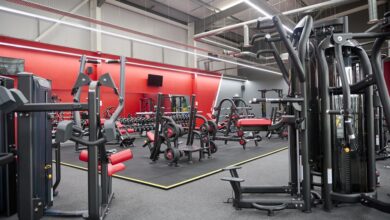
The best way to grow a business is to sell more mainstream product. To achieve that your staff need to be better at selling – more motivated, more skilled, more confident that they can do it well.
Unfortunately the retail world is typically very backward at training staff. There is the fear that training staff will result in them leaving to join competitors who afford better wages because they spend nothing on training.
That argument sounds valid but in reality staff who have been well trained are typically far more loyal than those who have not. There is always going to be a level of staff turnover but it is caused more by not training than the opposite. I would add that some staff turnover is no bad thing: new staff arrive with fresh ideas and ways of working that represent a learning opportunity for everyone else.
There is another negative reason for not training – it can make the boss (ie you) look bad. If your teenage staff are running rings around you at some aspect of retailing, it’s not a problem, it’s the market’s way of telling you that your own skills need upgrading. If you think your 25 years of experience means you don’t need update training, you are almost certainly wrong. I recall one manager coming out with the ‘25 years experience’ line and being told he had one year’s experience 25 times. There wasn’t actually a fist-fight but it was close. (Incidentally, the critic was right even if he was needlessly rude)
Borrow the best practice from the retail world at large, plus any small businesses whose staff you rate highly. As long as they aren’t competitors I’m sure the latter will be ready to provide input and the former have departments full of people to answer questions about such matters, plus websites featuring them in some detail.
My three recommendations to study would be Marks and Spencer, John Lewis and Aldi or Lidl, and, yes, that does mean setting your sights high, but businesses that get the best from training do just that.
Training staff to sell effectively in the retail environment is different from training applied in other business sectors. I have heard some horror stories of training programmes from completely different business sectors being shoehorned into retail.
It won’t work – it’s a disaster waiting to happen. Avoid. Equally, be wary of using a training system imported from the United States. Our two peoples share a language but we respond very differently to sales techniques.
Let’s look at some basic needs and how you use them. Building rapport with a customer is the first thing to aim for. In the sports trade there are a lot of potential ways to apply that: last night’s football results; the present Test match score, how many Brits are still left at Wimbledon etc, etc.
However, as a generalisation, I would recommend something much simpler and much easier – a polite greeting. We Brits like politeness. ”Good morning” and a smile does the job regardless of age, gender, colour, race or creed. Avoid over-familiarity – no young man I am not your mate and it’s not polite as such. I would suggest adding “Is there something specific you are looking for?” You should be on your way to a display at that point.
Next thing a staff member needs to know is how to show products. It’s worth pointing out to new staff that this is the fun part of the job, the bit where the customer is having fun, too. You can probably do an excellent job of this on your own but if you feel the need of support (especially on products that are not your strength), bring in the experts.
You know them well and their services are free. They’re called reps. The good ones in all sectors are mustard-keen on product training, not least because it’s what they’ve been trained to deliver.
As part of this ‘show and tell’ you will come up against a classic confusion. The experts say, and I totally agree, ‘sell benefits not features’. The problem is that a lot of sales and marketing people – some quite senior – don’t actually know the difference.
Amazing but true. OK, so here it is using cricket bats as an example: lightweight is a benefit; weighs just 2lbs 4 oz is a feature. As a simple guide, benefits are usually adjectives, features are nouns often with attached numbers.
A lot of sales and marketing experts will tell you that the key to retail success is growing your footfall.
I don’t suggest that the idea is entirely wrong but it certainly isn’t the be-all and end-all. There’s no point having a shop full of people unless they are all keen to flash the cash and you absolutely have to have well-trained sales staff to take full advantage of those prospective customers.
In my experience most sports retailers have young staff. For the purposes of training this is very good news. Online training comes naturally to them, it can be activated 24/7 and it’s typically a lot cheaper than the alternatives. Better still young staff usually like this training route and as a result you get better trained staff, faster, cheaper. What’s not to like?











